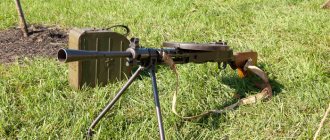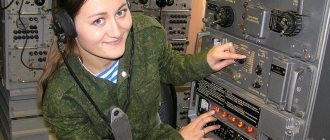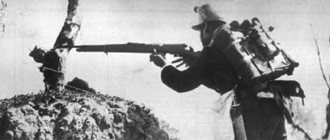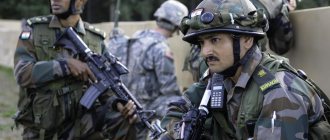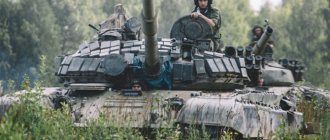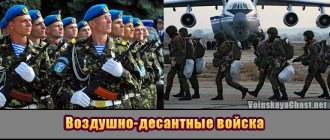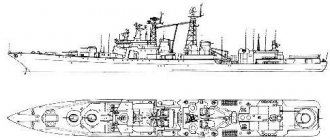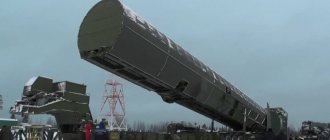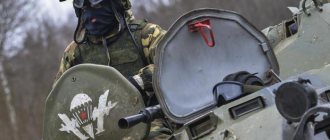History of armored trains (59 photos)
An armored train was an armored train that was intended to conduct combat operations on the railroad.
Such trains became widespread in the wars of the first half of the 20th century. In the USSR, they were in service until the 70s, only to be “resurrected” again in the Chechen company. Armored trains became the response of the Russian Empire to the development of tank construction during WWII, however, they were built not only in the Republic of Ingushetia. And it marked the beginning of armored vehicle construction in the United States, of course, during the Civil War.
Artillery armored platform 1880..
Armored car for South Africa 1919.
For the first time, guns were placed on railway platforms during the Civil War in the United States (1861−1865), in 1861 in the Army of the Northern States by the commander of the 19th Illinois Volunteer Regiment, Colonel I.V. Turchaninov (John Basil Turchin).
The artillery was quickly delivered to the Southern troops encamped near the railroad line and caused sudden devastation in their camp. This successful experience was later used repeatedly.
In 1864, 13-inch mortars were installed on the platforms, which fired shells weighing approximately 100 kg with a firing range of up to 4.5 km during the siege of Pittsburgh.
In Europe, a similar use of railway platforms took place in 1871 during the siege of Paris by the Prussian army during the Franco-Prussian War of 1870-1871: it was possible to fire at the city’s fortifications from different sides.
British troops in Egypt 1880s
1899. South Africa.
By the beginning of the First World War, several armored trains of the simplest design were in service with the armies of most European states. After the outbreak of the First World War, the creation of new armored trains began in Germany, Austria-Hungary, Russia, France, and Italy. At the fronts, separate mobile units were also used - armored railcars.
typical armored train of the Caucasian Army, 1915. According to the project, it consisted of two armored platforms and a semi-armored locomotive. Armament - two 76.2 mm mountain cannons of the 1904 model and 8 machine guns, crew - 4 officers and 70 riflemen, armor thickness 12-16 mm. A total of four trains of this type were built.
In Russia, the “armored train boom” occurred during the Civil War. This was caused by its specifics, such as the virtual absence of clear front lines, a large number of irregular troops and an intense struggle for railways as the main means for the rapid transfer of troops, ammunition, and grain.
Armored train units were part of almost all the warring parties. In addition to the Red Army, they were also part of the White Guard Volunteer Army (later in the Armed Forces of the South of Russia (VSYUR)) of General Denikin, the Czechoslovak Corps (b/p “Orlik”), the UPR Army (b/p “Glory of Ukraine”, “Sichevik” ") and etc.
The widespread combat use of armored trains during the Civil War clearly demonstrated their main weakness. The armored train was a large, bulky target, vulnerable to artillery (and later air) strikes. It was also dangerously dependent on the railway line. To immobilize him, it was enough to destroy the canvas in front and behind.
Therefore, to restore destroyed tracks, armored trains included platforms with track materials: rails, sleepers, fastenings. The rate of restoration of the track by armored train soldiers was quite high: on average 40 m/h of track and approximately 1 m/h of bridges on small rivers. Therefore, the destruction of the tracks delayed the movement of armored trains only for a short time.
Some of the armored trains were received by the Red Army from the Russian Imperial Army, and mass production of new ones was also launched. In addition, until 1919, mass production of “surrogate” armored trains continued, assembled from scrap materials from ordinary passenger cars in the absence of any drawings; such an “armored train” could be assembled literally in a day.
By the end of the Civil War, the Central Council of Armored Units (Tsentrobron) of the Red Army had 122 full-fledged armored trains under its jurisdiction.
By 1928, the number of armored trains was reduced to 34.
However, during the interwar period, the Red Army did not abandon plans for the further technical development of armored trains. During the Great Patriotic War, armored trains and railway artillery (not classified as armored trains) remained in service. A number of new armored trains were built, and railway air defense batteries were deployed.
Armored train units played a certain role in the Great Patriotic War, primarily in protecting the railway communications of the operational rear
In addition to the Red Army, operational troops of the NKVD also had armored trains. They had 25 armored locomotives, 32 artillery armored platforms, 36 armored motor cars and 7 armored cars.
Soviet BEPO No. 695 type BP-35 (PR-35 + 2 x PL-37) together with BA-20zhd and BA-10zhd
At the beginning of the Great Patriotic War, the most popular domestic armored train was the BP-35. It included two PL-37 artillery platforms (not long before they were replaced by outdated PL-35) and one SPU-BP anti-aircraft gun with quad Maximums. Overall, it was a good armored train. However, the experience of a real war soon showed all its advantages and disadvantages. The cannons and machine guns were quite a good striking force, but the air defense and armor were insufficient.
The catastrophic start of the war, huge losses in military equipment and weapons, and the impossibility of quickly replenishing them due to the evacuation of enterprises forced the army command and industry leadership to look for a way out of such an easy situation.
Broken Armored Train "For the Motherland"
Already in June-July 1941, in the vastness of the Soviet Union, at locomotive-building and repair factories, workshops, work began to boil on the construction of improvised armored trains. Everything that comes to hand is used: any iron sheets, carriages, locomotives, weapons almost from museums. The closer the enemy, the higher the pace of construction.
In the second half of 1941 alone, four (!) new types of armored trains, artillery and anti-aircraft, were created. All of them were produced in varying quantities, and the “record holder” in this regard was the anti-aircraft armored train of the 41st model - more than a hundred of them were made.
Armored train:
Captured Soviet armored car in the service of the Wehrmacht.
Making the "Armored Train":
Each armored train consisted of a combat unit and a base. The combat unit was intended for direct combat operations and included an armored locomotive, two armored platforms and 2-4 control platforms, which were attached to the armored train from the front and rear, and served to transport materials for repairing the railway track (rails, sleepers, etc.) and for protection against mine-explosive barriers.
The base of the armored train provided it with fairly high autonomy of action and consisted of a carriage for the commanding staff, an office car, a club car, a kitchen car and several carriages for accommodating the personnel of the armored train.
The successful use of armored trains in the first months of the war contributed to the development of their construction in carriage depots in a number of cities.
At the same time, the design and armament of armored trains was largely an improvisation and depended on the availability of armor steel, weapons and technological capabilities of the depot.
Starting from the end of 1941, serial production of a standard armored train began:
OB-3 They were produced during the war according to a simplified scheme of the VR-35 type. However, the reservation was improved. There were about a hundred of them made. They played their role in WWII and were dismantled by the end of 1946
And the real crown of the domestic construction of armored trains went into service only in 1943, when the capabilities of industry already made it possible to focus on more promising equipment, such as tanks. The BP-43 armored train became to some extent a “hybrid” of a classic armored train and a tank.
Armored train "Salavat Yulaev" type BP-43
Since 1943, the production of motorized armored platforms has been put on stream:
The luckiest Armored Train:
The armored train was built in 1942 in Murom. It was protected by armor 45 millimeters thick and did not receive a single hole during the entire war. The armored train traveled from Murom to Frankfurt-on-Oder. During the war, he destroyed 7 aircraft, 14 guns and mortar batteries, 36 enemy firing points, 875 soldiers and officers. For military merits, the 31st separate special Gorky armored train division, which included the Ilya Muromets and Kozma Minin armored trains, was awarded the Order of Alexander Nevsky. In 1971, the armored steam locomotive “Ilya Muromets” was permanently parked in Murom.
Polish armored trains:
And armored tires:
German:
In the 30s, the German military command considered the development of aviation and tanks a priority, and the design of new armored trains turned out to be unnecessary. Only on the eve of the outbreak of World War II in July-August 1939, a shift occurred, and a decision was made to create seven new armored trains. However, there was not enough time to create real armored trains. Then a compromise was found: to use “line defense trains” and captured Czechoslovak armored trains.
However, the effectiveness of these armored trains was very low - the unfortunate location of the 75-mm guns (which were installed not in towers, but in casemates) significantly limited their firing sectors. But, despite the shortcomings, these armored trains were used until 1944, except for armored train No. 5, which was dismantled in 1940 (which was repeatedly modernized and repaired).
From 1943 to 1944, the Wehrmacht had about 70 armored trains of various configurations at its disposal, the main part was on the eastern front (about 30 heavy and 10 reconnaissance armored trains), the rest were on combat duty in the Balkans, France, Italy and Norway. With the subsequent retreat of the German army from the territory of the USSR, armored trains began to be actively used as means of mobile defense.
Often several armored trains held separate sections of the front, and at the most critical moment.
Repeatedly they successfully managed to hold the line, opposing not only infantry, but also tank units (February 1943, defense of the Debaltsevo-Shterovka line).
In the north, heavy armored trains operated against the USSR troops, and in the south, reconnaissance and trolley trains operated against the partisans. But further holding the front by using armored trains as “fire brigades” was no longer possible.
Just like the Wehrmacht, the above-mentioned department could no longer compensate for losses and carry out repairs.
At the beginning of February 1945, the last operational group (under the command of Colonel von Turkheim) was formed from the remaining operational heavy armored trains, whose main task was to hold the Berlin direction.
The group included 4 armored trains and the last new model, the modernized Berlin train, which was armed with turrets from Panther tanks.
After WWII:
Until 1953, armored trains served in Western Ukraine to patrol railways due to frequent attacks by UPA units on railway facilities. By a resolution of the USSR Council of Ministers of February 4, 1958, further development of railway artillery systems was stopped. By the end of the fifties, not a single armored train remained in service with the USSR.
At the end of the 1970s, due to tense relations between the USSR and the People's Republic of China, 4 (according to other sources, 5) BP-1 armored trains were created at the Kharkov Heavy Engineering Plant; after the improvement of Soviet-Chinese relations, these armored trains were transferred to reserve. They remained there until the beginning of 1990.
Armored trains in Chechnya:
Battle with the landing force
Armored trains not only participated in fire support for units of the Red Army, but also transported valuable cargo. Sometimes they combined both when performing a combat mission. For example, in August 1941, a German landing force in Ukraine managed to capture the Zhulyany station. Taking advantage of the surprise, the German paratroopers not only occupied the station building, but also took possession of several carriages containing equipment for the needs of the Red Army aviation. To protect themselves, the Germans dismantled the rails at the entrance to the station and blew up a small bridge. However, this did not stop the crew of the Liter A armored train. This armored train consisted of an armored locomotive (a typical armored locomotive of the Ov series) and three armored platforms, which were armed with 4 guns and 24 machine guns. Armored train commander A.S. Slow moving sent a team of repairmen and a group of fighters at night to restore the railway track. After the railway and bridge were restored, the armored train burst into the station at full speed at 4 a.m. and opened heavy fire on the stunned enemy. As a result of the actions of the armored train, the station was liberated from the German landing. Taking advantage of this, the crew of the armored train attached wagons with valuable cargo and took them to Kyiv to the location of the Red Army units.
Hunting for the "green ghost"
For eight months, the Zheleznyakov armored train operated as part of the Sevastopol defensive region, and it went on missions in conditions of complete superiority of German aviation in the air and the presence of a powerful enemy artillery group, which methodically destroyed railway tracks. Despite these circumstances, the armored train regularly made rapid forays, during which it fired at the enemy for several minutes, and then suddenly disappeared into the tunnels of Sevastopol.
“Ilya Muromets” and “Kozma Minin” were manufactured in Gorky in February 1942. The design took into account the experience of fighting armored trains in 1941. Each armored train consisted of an Ov armored steam locomotive protected by 20-45 mm armor, two artillery armored platforms and two air defense armored platforms, as well as a “base”.
In total, Zhelyaznyakov managed to make 140 combat missions. With his unexpected appearance on the battlefield, he caused a lot of trouble to the German troops, constantly keeping them in suspense. The Germans set up a real hunt for the Zheleznyakov: they regularly sent aircraft, specially allocated artillery units to destroy it, but for more than six months the armored train managed to deceive the enemy. The Germans dubbed him the “green ghost.” Unfortunately, on June 26, 1942, the legendary armored train was nevertheless destroyed: under air strikes it was buried in a tunnel, the arches of which could not withstand another powerful air raid.
"Ilya Muromets" vs. "Adolf Hitler"
It should be noted that not only the Red Army, but also the Wehrmacht had armored trains. Therefore, the armored trains of the warring sides, although rarely, still had to meet each other on the battlefield. As a result, armored train duels occurred. In the spring of 1944, the Red Army liberated the territory of the Volyn region of Ukraine with stubborn battles. Heavy battles broke out for the city of Kovel, which Soviet troops were unable to capture immediately. The 31st separate special Gorky division of armored trains under the command of Major V.M. was sent to help the advancing Soviet infantrymen. Morozova.
One morning, scouts spotted a German artillery battery. She fired for three minutes and then stopped firing. The terrain and the crowns of tall trees made it difficult to find out its exact location. The infantry contacted aerial reconnaissance but were told that no battery had been found. The next morning at 9 o'clock an unknown battery again opened fire for three minutes. And again the Soviet soldiers failed to detect her. This went on for several days until the Germans were let down by their inherent pedantry. The scouts, sitting at a pre-prepared observation post in the crown of a tree, noticed plumes of smoke at exactly 9 o’clock. It dawned on them that it was an enemy armored train. The headquarters of the 31st division developed a plan to destroy the enemy armored train. The main task was to be carried out by the armored train "Ilya Muromets": to find a suitable place for an ambush, destroy the railway track with artillery fire from its cannons and thereby cut off the escape route for the enemy, and then destroy the German armored train.
On June 4, 1944, at exactly 9 o’clock in the morning, a duel of armored trains took place. The battle was fleeting. Shots from both sides rang out almost simultaneously. The gunners of “Ilya Muromets” showed high skill. The German armored train was covered by the first shots. However, he managed to turn the muzzles of the guns towards the Ilya Muromets and fire a return salvo. But the shells missed the Soviet armored train. A salvo of "Katyusha" from the armored platforms of "Ilya Muromets" completed the defeat of the enemy armored train. Soon it was all over for him. It is symbolic that the destroyed German armored train bore the name “Adolf Hitler.”
